Vasco Szinetar's photography | La fotografía de Vasco Szinetar
El oficio del artista es, quizás, encontrarse en cualquier lugar. Y encontrarse significa, descubrir arte, precisamente, en cualquier lugar. La historia de la fotografía Venezolana, como arte, es quizás de las más silenciosas de todas. No tenemos pues a un Carlos Cruz-Diez o a un Reverón, como en pintura; a un Rómulo Gallegos o Ramos Sucre, en literatura; inclusive un Edgar Ramírez, en actuación o un Chávez en política. Si en la fotografía venezolana hemos tenido personajes representativos, uno de ellos es el extrovertidísimo Vasco Szinetar, uno de los fotógrafos más activos en Venezuela actualmente y de quien vengo a hablarles hoy junto a su última exposición "Caracas postcards: últimos apuntes"
The artist's job is, perhaps, to find yourself anywhere. And to find yourself means to discover art, precisely, in any place. The history of Venezuelan photography, as art, is perhaps one of the most silent of all. So we don't really have a Carlos Cruz-Diez or a Reverón, as in painting; a Rómulo Gallegos or Ramos Sucre, in literature; even an Edgar Ramírez in acting or a Chávez in politics. If in Venezuelan photography we have had representative characters, one of them is the extroverted Vasco Szinetar, one of the most active photographers in Venezuela today and of whom I'll speak to you today, along with his last exhibition "Caracas postcards: last notes".
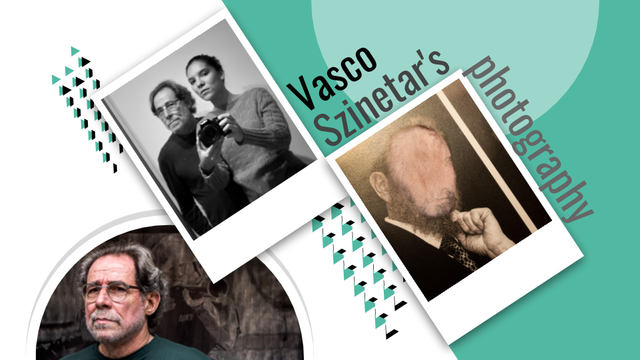
¿La selfie de autor?
An Auteur's Selfie?
Antes de sumergirnos en la exposición más reciente del artista hablemos un poco de fotografía y del trabajo que popularizó a Vasco alrededor del mundo. El nombre de Vasco se ganó un espacio en la historia de la fotografía Venezolana por ser aquel que empezó a desdibujar los límites comerciales entre la fotografía periodística, documental y artística cuando en el país, durante los años setenta, sólo se encontraba lugar en la prensa para publicar fotografías. Vasco consiguió este espacio con retratos hechos a celebridades de todo el mundo. Desde Jorge Luis Borges hasta Allen Ginsberg, Vasco se rodeó de los más grandes escritores y poetas de nuestro tiempo, ya que era amante de la poesía tanto como de la fotografía. El gran momento de la serie vendría con el retrato a Borges, donde el propio Vasco menciona "En 1982 me retraté con Jorge Luis Borges y en ese momento me dije “Vasco este es un proyecto trascendental, retratar a Borges es retratar al dios de la palabra”.
Before we start in the artist's most recent exhibition, let's talk a little about photography and the work that made Vasco famous around the world. Vasco's name earned a place in the history of Venezuelan photography for being the one who began to blur the commercial boundaries between journalistic, documentalist and artistic photography when in the country, during the seventies, there was only room in the press to publish photographs. Vasco obtained this space with portraits made of celebrities from all over the world. From Jorge Luis Borges to Allen Ginsberg, Vasco surrounded himself with the greatest writers and poets of our time, as he loved poetry as much as photography. The greatest moment of the series would come with the portrait of Borges, where Vasco himself mentions "In 1982 I portrayed myself with Jorge Luis Borges and at that moment I said to myself "Vasco this is a transcendental project, portraying Borges is portraying the god of the word".
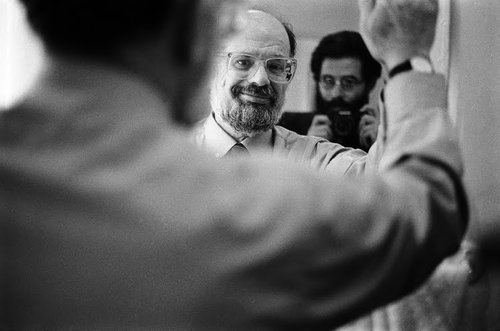 | 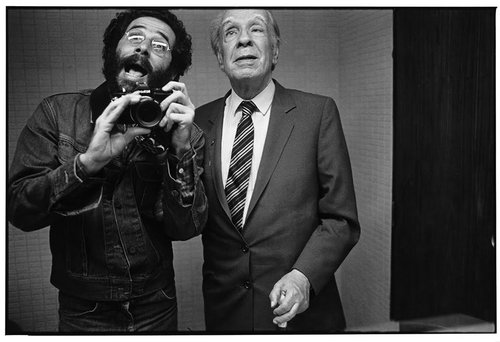 | 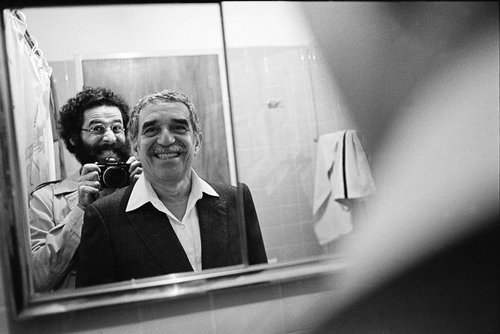 |
|---|
Allen Ginsberg, Jorge Luis Borges and Gabriel García Márquez
Este trabajo en el cual lleva trabajando continuamente por más de 40 años lo titula Frente al espejo, también cuenta con un trabajo llamado Cheek to Cheek contando con un vasto registro de grandes figuras de la cultura alrededor del mundo.
«Estaba fascinado por el mundo de los escritores y empecé a hacer retratos de ese entorno. Se publicaron y eso me fue devorando. Dar testimonio de los rostros de la cultura y de la política se volvió un trabajo obsesivo. Luego se transformó en una obra más conceptual que tenía que ver con la exploración del espacio privado, familiar, a través de la imagen», señala Szinetar.
This work in which he has been working continuously for more than 40 years is called In front of the mirror, also has a work called Cheek to Cheek with a vast record of great figures of culture around the world.
"I was fascinated by the world of writers and began to make portraits of that environment. They were published and that was devouring me. Giving testimony of the faces of culture and politics became an obsessive work. Then it became a more conceptual work that had to do with the exploration of the private, familiar space, through the image," says Szinetar.
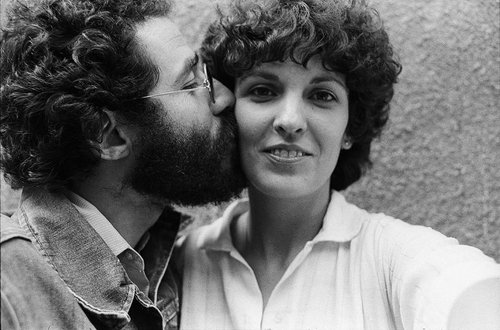 | 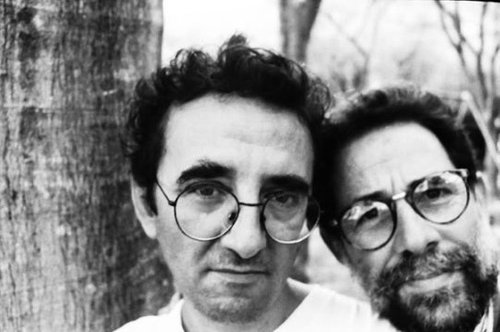 | 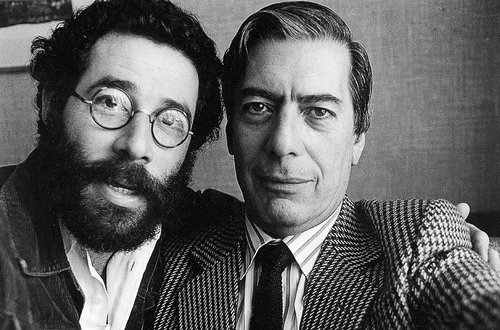 |
|---|
Yolanda Pantin, Roberto Bolaño y Mario Vargas Llosa
Alejandro Oliveros
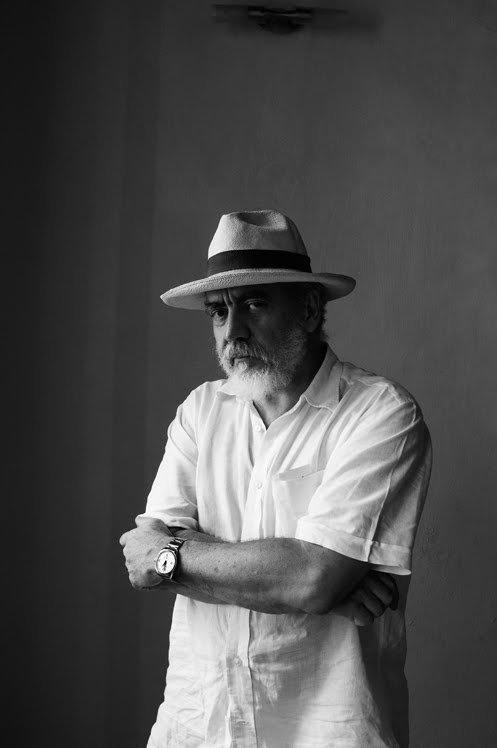
Reinaldo Arenas
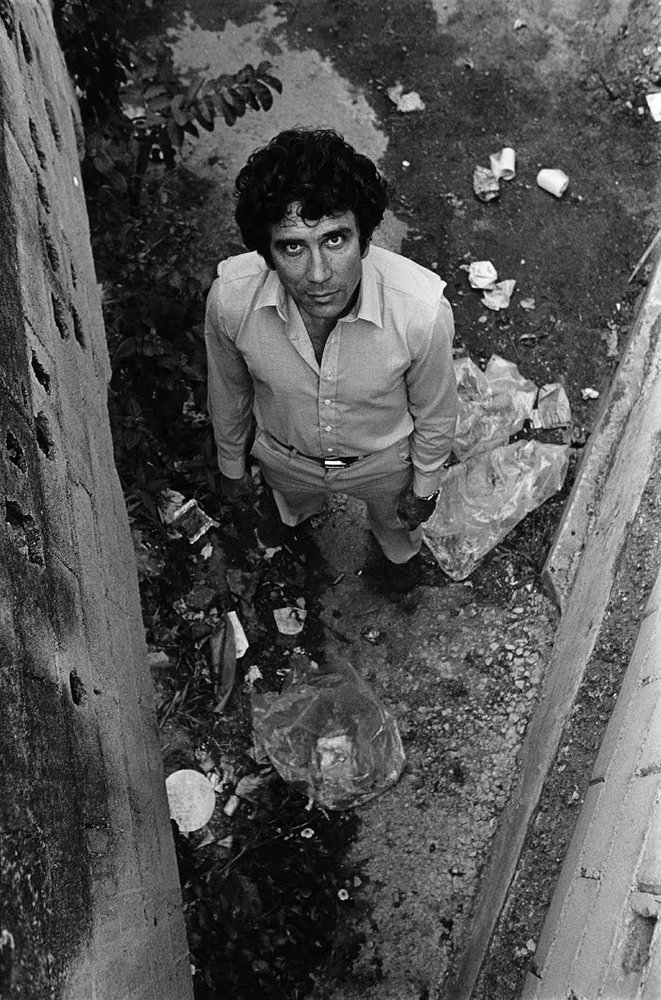
Es casi imposible ver este trabajo y no pensar en la tan popular "selfie" de la actualidad, si bien la parte más conocida de este trabajo no tiene nada que ver con el llamado selfie Vasco lo confronta y menciona en Barcelona, España, donde fue expuesto parte de su trabajo Frente al Espejo
It is almost impossible to see this work and not to think about the very popular "selfie" of present times; although the most known part of this work has nothing to do with it, Vasco confronts it and talks about it in Barcelona, Spain, where part of his work “In front of the mirror” was exhibited.
«La diferencia fundamental es que el mío es un proyecto conceptual. La selfie contemporánea es un evento social efímero que no está ligado a una continuidad. Es una foto que te tomas con un teléfono, generalmente no la guardas y se pierde en el torrente de las redes. No está hilada a un discurso. En cambio, mi trabajo es sumamente estricto, se repite hasta el infinito con unas reglas que se han venido construyendo con el tiempo.»
«The fundamental difference is that mine is a conceptual project. The contemporary selfie is an ephemeral social event that isn't linked to continuity. It's a photo that you take with a phone, generally, you don't keep it and it gets lost in the torrent of the web. It is not related to a particular discourse. On the other hand, my work is extremely strict, it is repeated to infinity with rules that have been built over the years»
También ha presentado Cuerpo de exilio que habla sobre su experiencia como exiliado en Colombia durante dos años y actualmente desarrolla Call with... un trabajo fotográfico mucho más experimental al retratar venezolanos a través de una pantalla de computadora vía Skype. Claramente el exilio de Vasco sensibilizó su mirada artística hacia los acontecimientos políticos que suceden en Venezuela y fijó su fotografía a un trabajo más crítico y político.
He has also presented Body of Exile, in which he talks about his experience as an exiled man in Colombia for two years. He's currently developing Call with..., a much more experimental photographic work of portraying Venezuelans around the world through a computer screen via Skype. Clearly, Vasco's exile sensitized his artistic perspective on the political events taking place in Venezuela and focused his photography on a more critical and political work.
Cuerpo de exilio
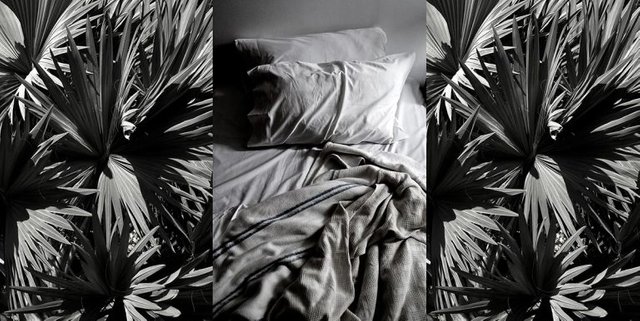
Call with my sons

Vasco también se ha especializado como curador de arte y director de distintas galerías y museos en el país desde los años 80. Actualmente trabaja con el Archivo de Fotografía Urbana de Venezuela, siendo uno de los responsables de llevar el trabajo del venezolano Alfredo Cortina al MoMa en Nueva York.
Vasco has also been an art curator and director of various galleries and museums in the country since the 1980s. He's currently working with the Photography urban files of Venezuela, being one of those who was responsible for taking the work of the Venezuelan photographer Alfredo Cortina to the MoMA in New York.
Caracas postcards: últimos apuntes.
Caracas postcards: last notes.
La situación en Venezuela no han detenido a Vasco Szinetar de continuar creando y exponiendo su trabajo que se mantiene ligado, como todo el trabajo de Vasco, a la poesía y profunda sensibilidad. Así pues llega el día para mí de conocer a Vasco Szinetar, ahora mucho más comprometido con su trabajo de Caracasposcards
The situation in Venezuela has not stopped Vasco Szinetar from continuing to create and expose his work which, like all Vasco's work, remains linked to poetry and a profound sense of sensitivity. So the day comes for me to meet Vasco Szinetar, now much more committed to his work of Caracasposcards.
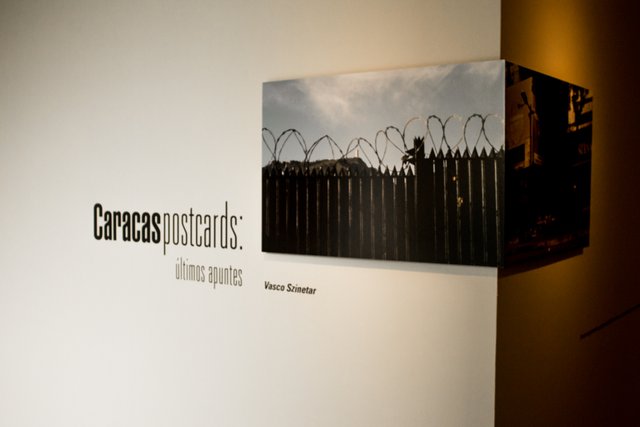
Me encuentro en mis vacaciones universitarias, haciendo un curso de fotografía junto a Ricardo Jimenez (importante fotógrafo urbano de Venezuela) en los espacios de La ONG (Organización Nelson Garrido) y el profesor nos invita a la última exposición de Spazio Zero Galerias para realizar una visita guiada por el artista expuesto, un amigo cercano suyo, Vasco Szinetar. Todos aceptamos emocionados y al día siguiente, al finalizar la clase, nos fuimos en caravana a la Galería que tiene lugar en las Colinas de Bello Monte en la ciudad de Caracas.
I'm on my university break, doing a photography course with Ricardo Jimenez (important urban photographer of Venezuela) in the spaces of La ONG and the professor invites us to the last exhibition of Spazio Zero Galeries to make a guided tour by the exhibited artist, a close friend of his, Vasco Szinetar. We all accepted with emotion and the next day, when the class was finished, we went to the Gallery that takes place in the Hills of Bello Monte in the city of Caracas.
La exposición se divide en dos partes, la primera consta de varias fotografías hechas en la ciudad de Caracas por Vasco y que son acompañadas de versos desplegados a lo largo de toda la sala, hay un interés de Vasco en ver cómo el texto y la fotografía se vinculan y dialogan en el tiempo. Estas fotografías son principalmente un registro de la precariedad que golpea el país, y el texto aquel intenso dolor que causa recorrer(se) en este lugar.
The exhibition is divided into two parts, the first consists of several photographs made in the city of Caracas by Vasco and they are accompanied by verses displayed throughout the room, there is an interest of Vasco in seeing how the text and photography both are linked and dialogue in time. These photographs are mainly a record of the precariousness that hits the country, and the text is that intense pain that causes to search (yourself) in this place.
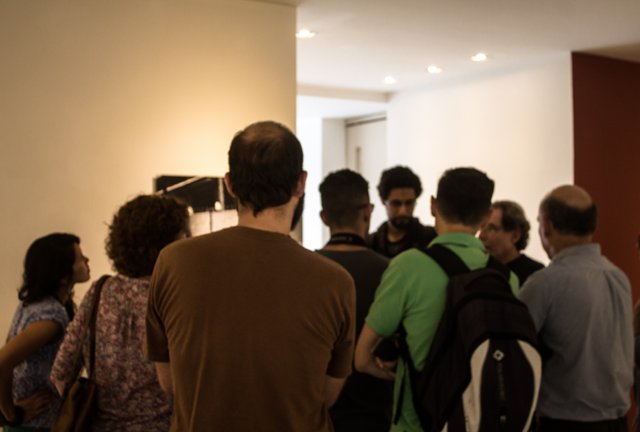 | 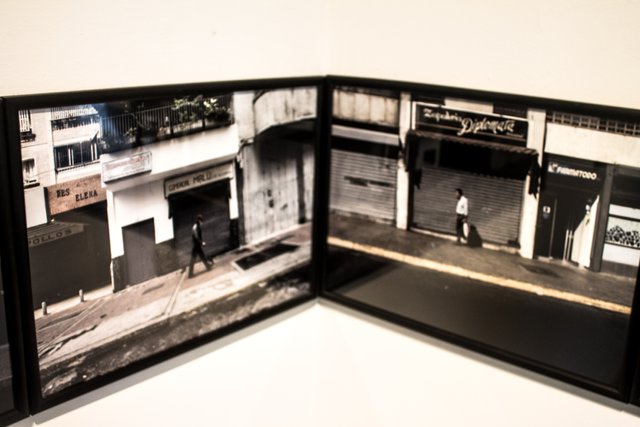 | 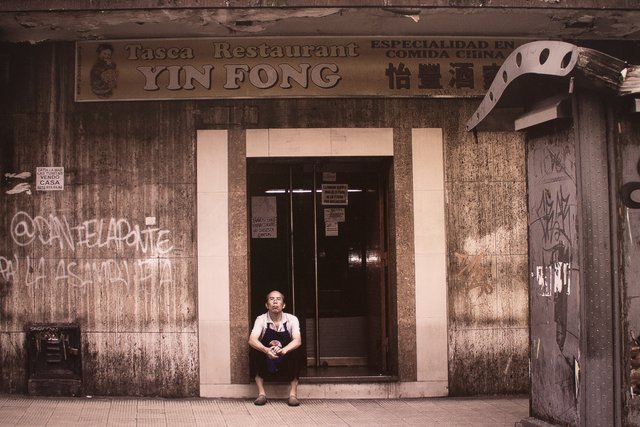 |
|---|
El autor menciona que realizó las fotografías en automático con una cámara DSLR mientras recorría la ciudad en carro y que luego las reveló de una manera en que se apreciara la miseria del espacio, borrando casi por completo el color y dejándole una escala de grises o sepia completando el paisaje desdibujado de Caracas que ahora ve Vasco.
The author mentions that he took the photographs in automatic with a DSLR camera while driving around the city and then revealed them in a way that could be appreciated the misery of the space, erasing almost completely the color and leaving a grayscale or a sepia tone completing the blurred landscape of Caracas that Vasco now sees.
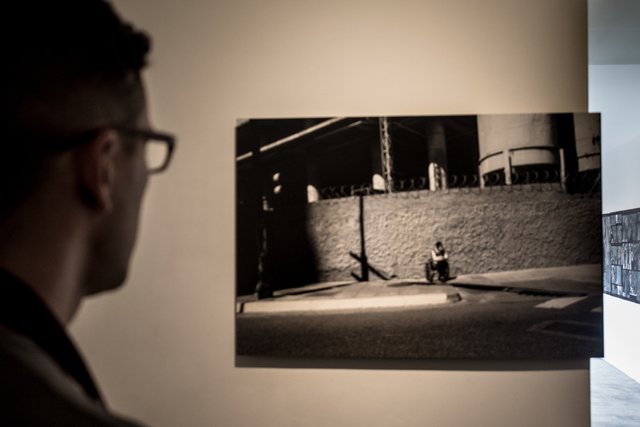
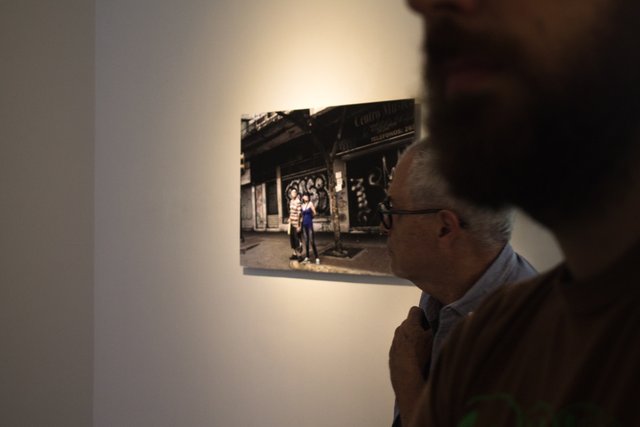
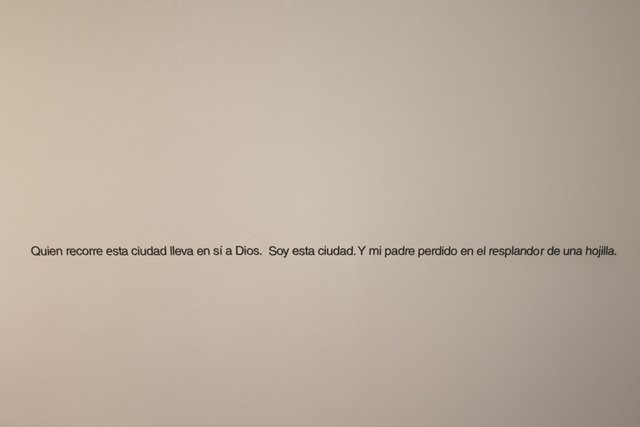
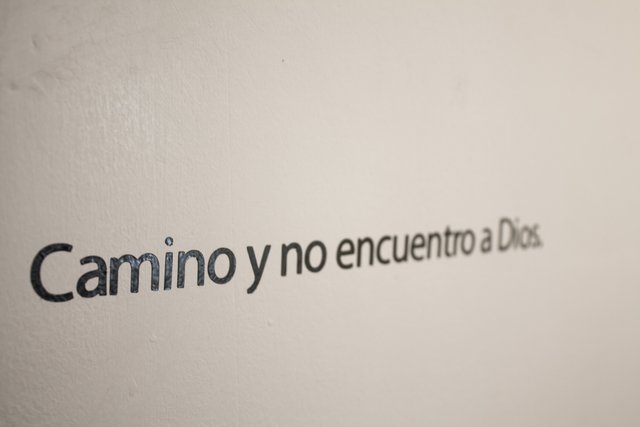 | 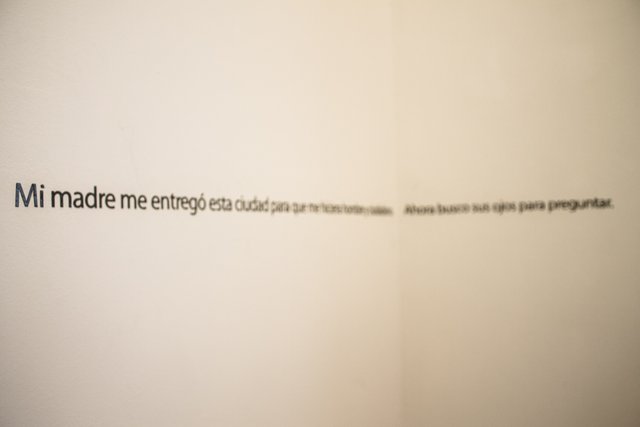 | 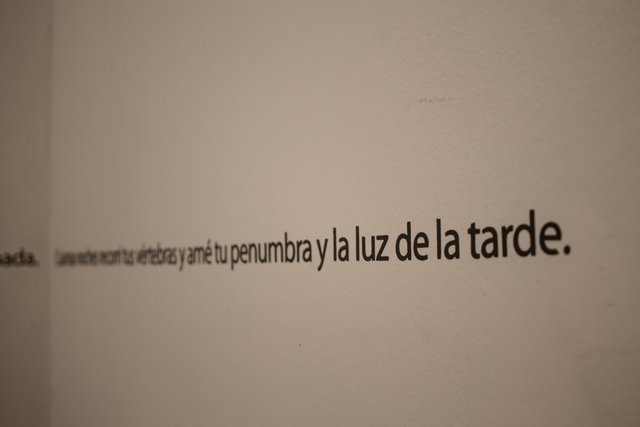 |
|---|
Szinetar y Jiménez compartieron varias experiencias que han experimentado a lo largo de los años haciendo fotografía de calle juntos, ya que Ricardo Jiménez fue uno de los acompañantes de los recorridos de Vasco, mencionan que definitivamente ya no es lo mismo, que las calles de Caracas están llena de cosas muy interesantes pero también doloras. Ambos hablan de las obsesiones y cómo ellas son motor de creación cuando son pensadas y reflexionadas, me parece muy lindo ver cómo comparten con nosotros mucho de la relación fraternal que los ha unido por muchos años, Vasco es de esas personas que sabe cómo acercarse a ti rápidamente.
Szinetar and Jiménez shared several experiences that they have experienced over the years doing street photography together since Ricardo Jiménez was one of the partners of Vasco tours, they mention that it is definitely not the same anymore, that the streets of Caracas are full of very interesting but also painful situations. Both speak of obsessions and how they are the motor of creation when they are thought and reflexive, it was very nice to see how they shared with us so much of the fraternal relationship that has united them for many years, Vasco is one of those people who know how to connect with you quickly.
 |  |
|---|
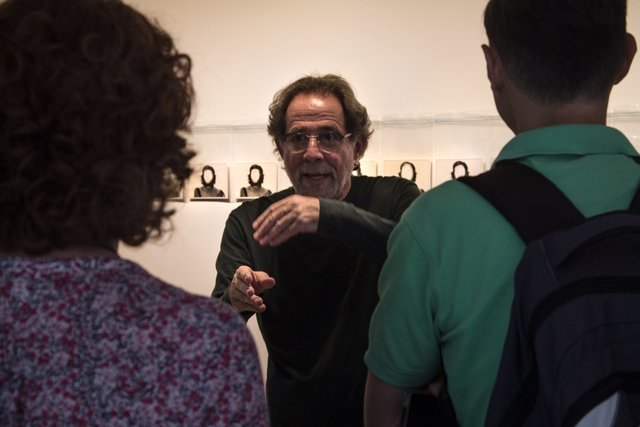
La segunda parte de la exposición es el resultado de una serie de intervenciones plásticas a fotografías de archivo que retratan representantes marxista y comunistas, como el Ché Guevara, Fidel Castro, Sartre y Simone Beauvoir, así cómo Hugo Chávez e incluso a Simón Bolívar (el rostro nuevo) se les borraría el rostro. Dentro del salón, el rostro que más se repite es el del Ché, símbolo mundial de la Revolución Cubana, según el autor, es el que debía ser mayor numero de veces borrado por ser el más significativo dentro del pensamiento socialista.
Es parte de esta exposición (pero como muestra del archivo fotográfico de Vasco en forma de libro) quizás mi fotografía favorita de él, un retrato a Fidel Castro que le haría en una visita a Venezuela y que, como dice Vasco, es de esos milagros de la luz.
The second part of the exhibition is a series of plastic interventions to archive photographs that portray Marxist and communist representatives, such as Ché Guevara, Fidel Castro, Sartre, and Simone Beauvoir, as well as Hugo Chávez and even Simón Bolívar (the new face). Their face would be completely erased. Inside the room, the Ché Guevara is the face that's most repeated, the world symbol of the Cuban Revolution, according to the author, which must have been most often erased because it's the most significant in socialist thought.
It's part of this exhibition (but as a sample of the photographic archive of Vasco, in the form of a book) perhaps my favorite photograph of him, a portrait of Fidel Castro that he did in a visit to Venezuela and, as Vasco says, it's one of those miracles of light.
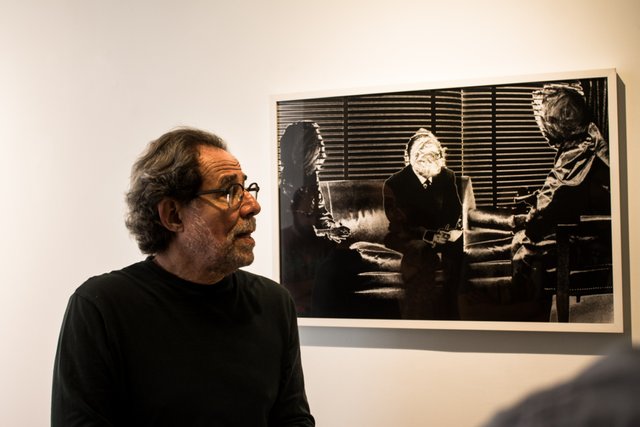 | 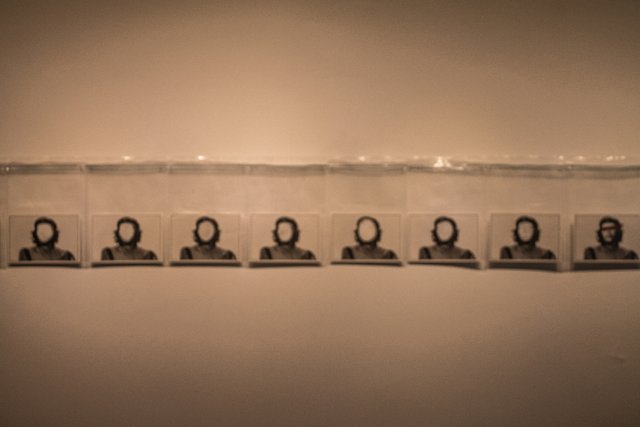 | 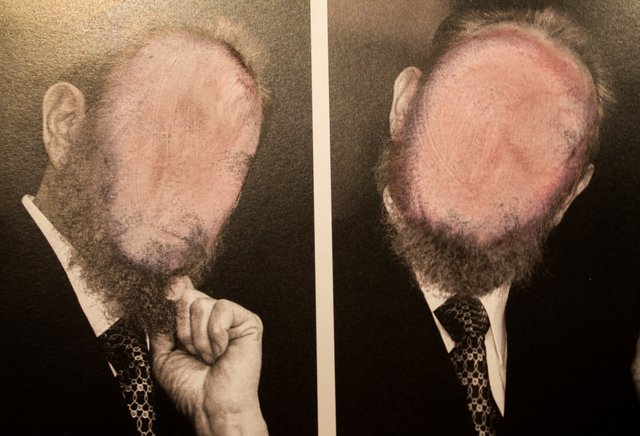 |
|---|
.jpg)
"Era el día de la segunda posesión de Carlos Andrés Pérez en el Teatro Teresa Carreño en 1989. Cuando entró Fidel, con todos sus guardaespaldas, yo, que estaba en uno de los balcones del Teatro, le grité: Fidel! llamándolo como si fuéramos amigos. Él se volteó a mirarme y yo hice ‘click’." Fuente
"It was the day of the second presidential period of Carlos Andrés Pérez at the Teresa Carreño Theater in 1989. When Fidel came in, with all his bodyguards, I, who was on one of the balconies of the Theater, shouted: "Fidel", calling him as if we were friends. He turned to look at me and I clicked. Source
Vasco expone a estos defensores ideológicos como causantes principales de la miseria en las primeras fotografías y enmarcan en la sala a pequeñas obras con personajes sin rostro, los comunes y a la obra más grande; un mural con la fotografía de Óscar Pérez, personaje fundamental para el desenlace de los tres meses de protesta que se llevaron a cabo en el país en el año 2017 y quien a principios del 2018 sería brutalmente asesinado. Vasco culpa a toda la ideología socialista y militarista de esta muerte y de todas las muertes presentadas en la obra que cierra la exposición, el mural detrás de Vasco en la foto de portada de este artículo.
Vasco exposes these ideological defenders as the main causes of misery in the first photographs and frames in the room small works with faceless characters, the common ones and the larger work; a mural with the photograph of Óscar Pérez, fundamental character of the result of the three months of protest that took place in the country in 2017 and who at the beginning of 2018 would be brutally murdered. Vasco blames all the socialist and militarist ideology for this death and all the deaths presented in the work that closes the exhibition, the mural behind Vasco in this photograph.
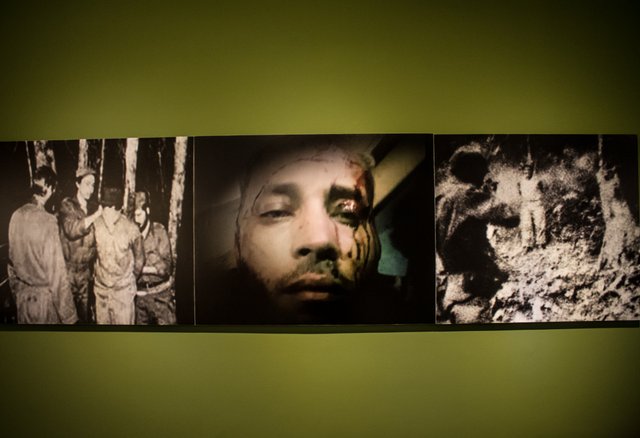
Oscar Pérez fue un militar, líder del ataque al Tribunal Supremo de Justicia de Venezuela durante las protestas del 2017. El 15 de Enero del 2018 fue víctima de un operativo por parte del gobierno de Maduro donde fue asesinado por seguidores del régimen de Maduro. Las imágen del medio es precisamente Oscar Pérez haciendo un comunicado minutos antes de morir.
Óscar Pérez was a military, leader of the attack on the Supreme Court of Justice of Venezuela during the 2017 protests. On January 15, 2018, he was the victim of an operation by the Maduro government where he was killed by followers of the Maduro regime. The image of the middle is precisely Óscar Pérez making a statement minutes before he died.
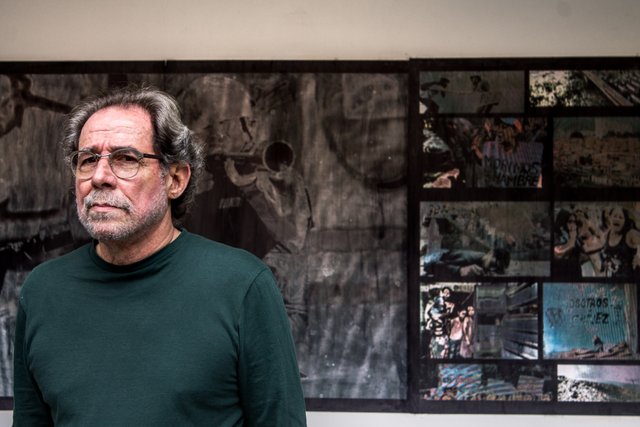
Un mural expuesto a plena luz del sol, así como lo estuvo ante el mundo lo sucedido en esas protestas, y que recoge fotografías, capturas de pantallas y archivos de los momentos más significativos de la lucha civil que se llevó en esos meses en Venezuela. Intervenidas desde lo manual. El fotógrafo habla del proceso analógico por el que pasaron las fotos para conseguir resaltar sólo ciertos colores que sumarán al discurso plástico que viene trabajando el autor desde "Cuerpo de exilio"
A mural totally exposed, as it was to the world what happened in those protests, collects photographs, screenshots, and archives of the most significant moments of the civil strife that took place those months in Venezuela. Intervened manually, the photographer talks about the analog process through which the photos went by in order to highlight only certain colors that will add to the plastic discourse that the author has been working on since "Body of exile"
Breve reflexión.
Brief thought
Esta obra me impactó particularmente porque se encontraba a contrapared de la obra de Oscar Pérez, me hizo pensar que eran las dos caras de la moneda porque en Venezuela la imágen de Oscar Pérez, con ayuda del gobierno y la incredulidad del venezolano, fue ridiculizada, incluso caricaturizada hasta el punto de ser considerado un completo farsante, sabiendo esto me impactó muchísimo ver esa obra de Oscar Pérez allí, ser llamado víctima, que sí lo fue pero ¿merece más reconocimiento que aquellos que salieron a las calles desarmados? Me tomé el atrevimiento de preguntarle a Vasco si esta forma de exponer las dos obras había sido intencional, si pretendía decirnos algo con ello. Se quedó en silencio, luego yo seguí rápidamente y me expliqué, le dije que nuestra tendencia de hacer héroes era indiscutible y mencioné nuestra tendencia cultural a los caudillos y que Oscar Pérez de alguna u otra forma se convirtió en eso, ¿por qué lo convertimos en eso? ¿por qué lo ponemos en una galería de arte? la batalla fue de muchos otros y en aspectos muchos más grandes que sólo el de otro militar más.
Lo primero que me dijo Vasco fue "¿Vas a escribir sobre eso? Escríbelo, escríbelo", entendí el porqué este hombre había conseguido esos retratos con tales celebridades y el reconocimiento de toda una esfera cultural (la caraqueña, por supuesto), era imposible no amarlo porque era un personaje honesto y sensible en sus locuras y obsesiones, era Vasco Szinetar.
This work had a particular impact on me because it was at the opposite side of the wall where Oscar Pérez's photograph was. It made me think that they were the two sides of the coin because in Venezuela the image of Oscar Pérez, with the help of the government and the incredulity of the Venezuelan people, was ridiculized, even caricatured to the point of being considered a complete fraud. I took the audacity to ask Vasco if this way of exposing the two works had been intentional if he intended to tell us something with it. He remained silent, then I quickly followed and explained myself, I told him that our tendency to make heroes was unquestionable and I mentioned our cultural tendency to make leaders and that Oscar Pérez, in one way or another, became that, why did we turn him into that? why do we put him in an art gallery? the battle was of many others and in many aspects much bigger than just that of another military man.
The first thing Vasco said to me was "Are you going to write about it? Write it down, write it down", I understood why this man had achieved those portraits with such famous personalities and the recognition of an entire cultural sphere, it was impossible not to love him because he was an honest and sensitive character in his madness and obsessions, he was Vasco Szinetar.
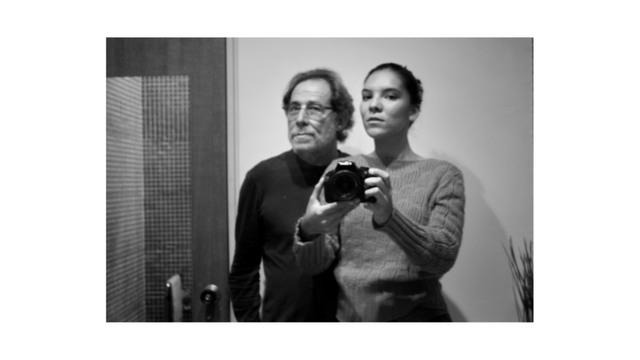
Y por supuesto que varios le pedimos una fotografía en el baño al fotógrafo del selfie, aquí la mía desenfocada pero qué más da, por lo menos fuimos. Conseguí mi foto icónica con el fotógrafo.
And of course several of us asked the photographer to give us a bathroom photo, like those that made him famous. And here's mine, unfocused, but it doesn't matter, at least we have it. I have my iconic photo with this photographer.
Todas las fotografías del primer capítulo "¿La selfie de autor?" pertenecen a Vasco Szinetar y pueden conseguirlas en su blog peronal
Todas las fotografías en la Galería Spazio Zero, tomadas por mí con una Canon T3
All the photographs in the first chapter "An Auteur's Selfie?" belong to Vasco Szinetar and can be found in his personal blog.
All photographs in Spazio Zero Gallery, taken by me with a Canon T3.
¡Muchas gracias por leer!
Thanks for reading!
Pásate por mis últimos Posts:
My last posts:
Posted from my blog with Steempress http://jeilinespinel.vornix.blog/2018/09/14/vascoszinetar/

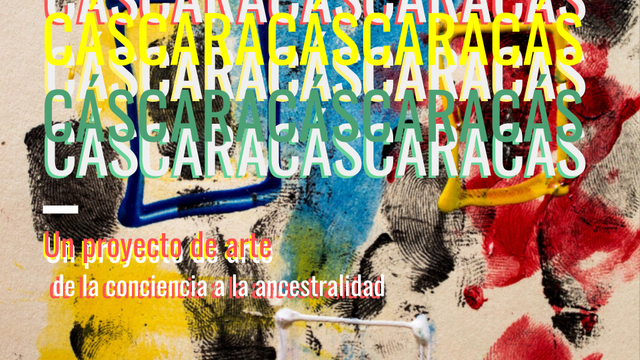
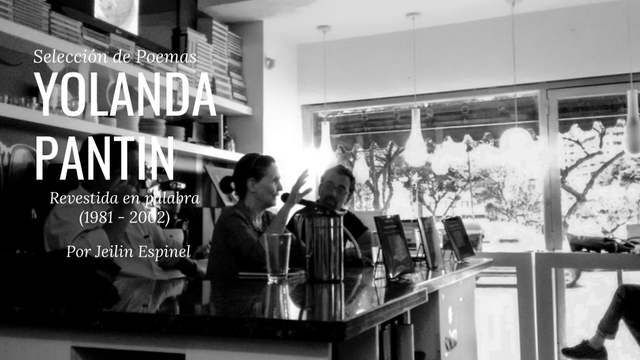
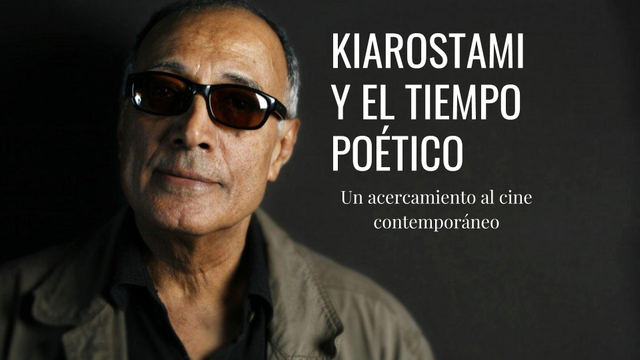
Un trabajo muy interesante @ jeilinespinel, me encantó conocer el trabajo de este famoso fotógrafo, su trabajo es exquisito
Excelente post. No había escuchado de este fotógrafo, tienes razón al decir que la fotografía venezolana, como arte es de las más silenciosas. ¿Todavía sigue su exposición en el museo?